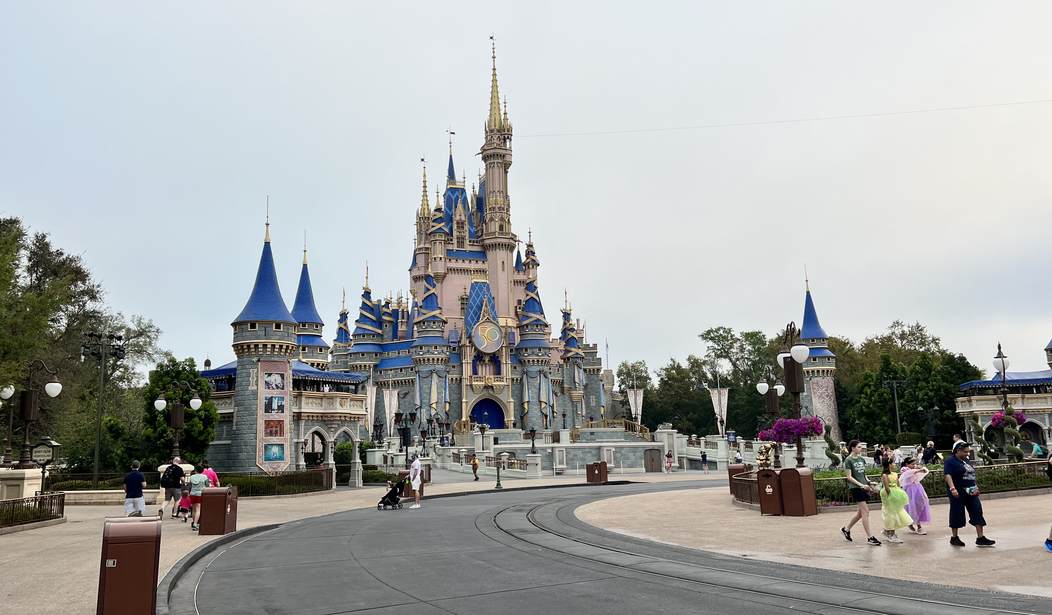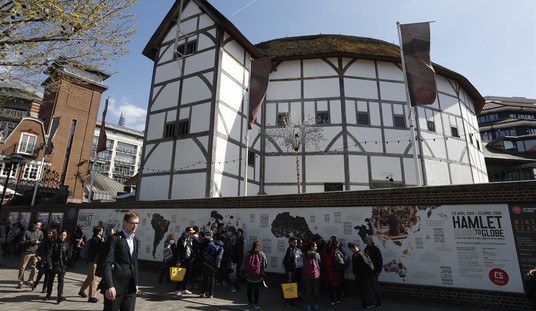Last week I shared with you the examples of disinformation in the unfunny recent Cracked.Com parody of Walt Disney giving a TED Talk. I only got through a fraction of the video before I reached 2,000 words! So I went back to the video (I sacrificed so you don’t have to watch it) and found even more examples of the type of disinformation that the Left makes up to try and destroy Walt Disney. Here are four more of them, along with rebuttals based in fact.
1. “In my vision of the Disney universe there’s no room for pinko, liberal, bleeding hearts to spoil the magic…”
As I’ve written before, although Walt Disney did become a conservative, he grew up under the influence of a Socialist father, and he remained politically naive for much of his adult life. He once said:
A long time ago, I found out that I knew nothing whatsoever about this game of politics and since then I’ve preferred to keep silent about the entire matter rather than see my name attached to any statement that was not my own.
Walt didn’t care about the political leanings of his staff, for the most part. Some of the animators and Imagineers in his inner circle held beliefs far to Walt’s left, and the studio employed plenty of left-wing artists and writers. All Walt worried about was the quality of their work. Michael Barrier writes:
An employee’s politics were not of any particular concern to him if that employee was not challenging him as Art Babbitt and Dave Hilberman had. Some of Disney’s employees, like Ward Kimball, flourished even though it was no secret that their politics were far more liberal than his. Maurice Rapf, who worked for Disney as a live-action screenwriter for two and a half years in the middle 1940s, was an extreme example. He wrote many years later that Disney “knew very well that I was a dedicated left-winger. He may have even known that I was a Communist.”
2. “Did you know those folks at that upstart fast food chain Mcdonald's credit copying Disney branding with their dominant market share.”
At this point in the video, we see an excerpt from a book pointing out similarities between Disney and McDonald’s branding through the use of “Social Darwinism.” I researched and it’s The Cultural Work of Corporations, a 2009 book by one Megan Brown. This book is such a page-turner that there are literally no reviews of it on Amazon.
Brown’s book does boast a gushing editorial review quote on Amazon from left-wing economist Doug Henwood. The author is not a business professor or economist but an “associate professor of English at Drake University,” and she seeks to paint capitalists like Disney and McDonald’s founder Ray Kroc as bad guys:
Both men unabashedly attempted to destroy anything that hindered their progress toward market dominance… Disney fired employees who wanted to unionize and bought advertising space in Variety to accuse members of the Screen Cartoonists Guild of being Communist. While Darwin himself might never have recognized any connection between these business policies and his evolution theories, both Disney and Kroc envisioned themselves as survivors of the fittest kind.
The truth is the vast majority of the cartoonists who went on strike went back to work, and those who did not left of their own free will. Brown never makes any attempt to say that Kroc patterned his business practices on Walt Disney’s anyway. The two men just so happened to be among the most successful entrepreneurs of the 1950s – but that doesn’t make them bad guys, no matter how many people like Megan Brown and Michael Swaim try to lie about them.
3. “I sat old Ub Iwerks down and had him draw ‘Steamboat Willie’ all by himself [then fired him]…and then when Ub tried to start his own studio, I crushed him.”
One of Walt’s earliest star animators (and closest friends for a time) was Ub Iwerks. In the video, Swaim mispronounces the name as “Oob,” presumably to make the horrible joke, “Ub better clean out your desk, because you don’t Iwerks here anymore.” (This is what passes for humor at Cracked.) Iwerks helped Walt create Oswald the Lucky Rabbit and Mickey Mouse, and he animated many of the early Silly Symphonies himself.
After a time, Iwerks felt overworked and that his contributions went under-noticed, so he allowed businessman Pat Powers to lure him away from Disney. Iwerks’ departure hurt Walt personally, but he didn’t set out to “crush” his friend.
Interestingly enough, Cracked tells the real story of why Iwerks’ studio failed without the Disney touch:
Walt could replace Iwerks with new animators, but Ub couldn’t replace Walt’s sense of humor. Eleven years after leaving Disney, he came back to the studio, but this time around, he spent his talent concentrating on solving more technical problems…
In the end, Disney himself said his friend’s personality was the reason no one had ever heard of him. Iwerks was too shy to promote himself, and no one makes it in Hollywood without a little bravado.
Walt welcomed Iwerks back into the fold, where he worked on film special effects and Imagineering.
4. “It’s not about the cartoons or the content…it’s about making so, so, so much money.”
Ok, so Walt Disney and his brother Roy did manage to live lavish lifestyles, but they kept a lower profile and lived less high than most of the (less successful) Hollywood moguls. Both Disney brothers knew that it was just as easy to lose money as it was to make it, which is why they lived on the cheap in their earliest successful days.
Walt and Roy also took much of their earnings and reinvested them into the company:
Roy wrote his family on one occasion:
That’s where we have fooled the Depression. Anything that we saved up was all put into our business. We have been doing our own gambling.
And at another time:
While we are not making money hand over fist as the general public thinks, still we are making some money. However it is all going back into our business. Just think, there are 130 or 135 people around here, living on Mickey Mouse. He’s a pretty good mouse, don’t you think, to keep up so many families?
The brothers knew that business success and reinvestment had to grate on their father. In fact they both joked that they could imagine their father railing against his boys joining “the capitalist class.”
Walt was concerned with the artistry of his films and other projects – that’s why (and how) many of the films ran over budget and took longer to produce. That’s also the reason why Disneyland and Walt Disney World contained so many unique innovations and new ideas.










Join the conversation as a VIP Member